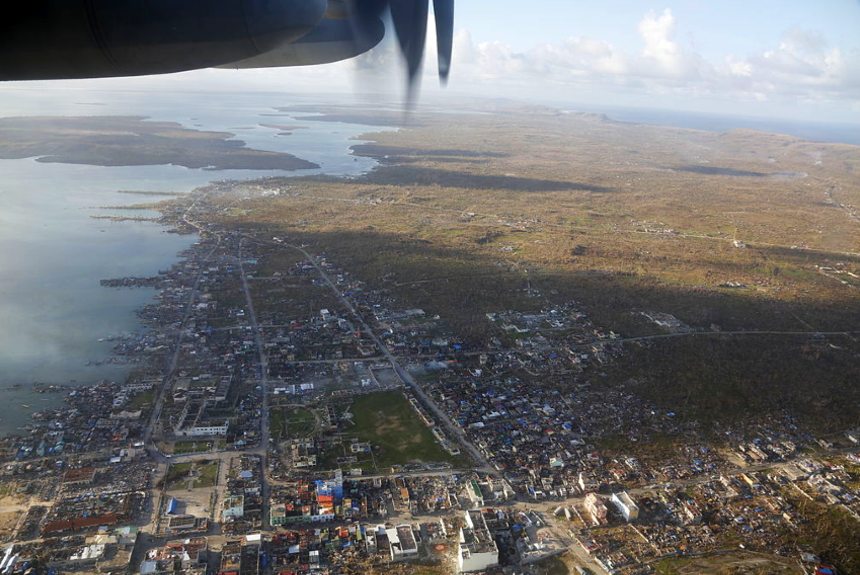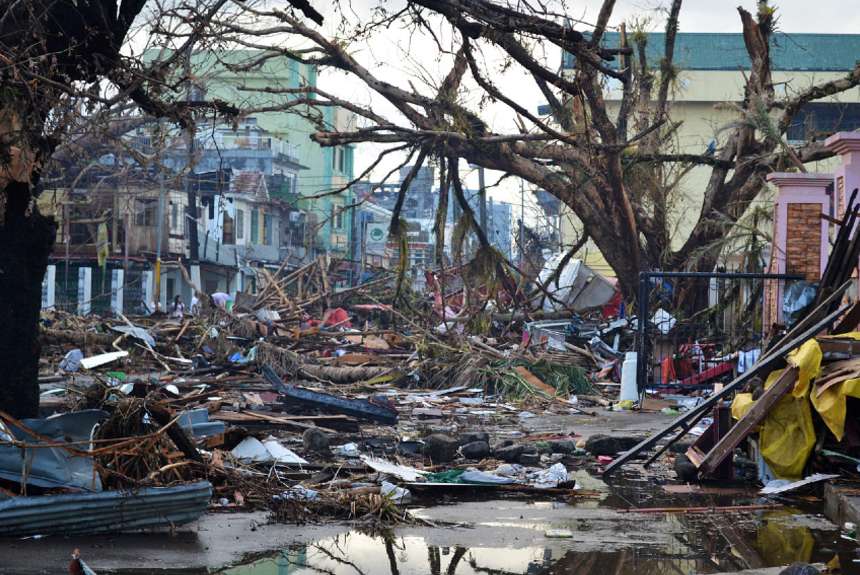
The Philippines has always been vulnerable to extreme weather, mainly tropical cyclones. Five of the ten most destructive typhoons have hit the country since 2006, displacing thousands of citizens and resulting in more than 1,000 casualties (The Climate Reality Project, 2016).
The report says an average of 20 tropical cyclones enter the Philippines yearly, with eight or nine making landfall.
Typhoon Haiyan in November 2013 claimed 7,360 lives and displaced 4 million people. The cost of rebuilding was estimated at $5.8 billion. It was one of the most disastrous natural events the country has encountered since the new millennium (The Guardian, 2018).
Over the past decade, these tropical storms have been more frequent and severe, and climate change is to blame, according to scientists.
The Asia-Pacific Report 2019 by the UNESCAP has identified the Philippines as one of the countries with an intensive risk of tropical cyclones, 2nd only to Japan based on its annual losses.
What makes the Philippines at risk?
Based on 2013 data, the Global Climate Risk Index 2015 listed the Philippines as the number one country affected by climate change (The Climate Reality Project, 2016). The article mentions the following factors.
Geography of the Philippines
Warm waters surround the Philippines, and sea-level rise as more heat is released into the atmosphere creates stronger and more frequent storms.
The country lacks natural barriers. Nothing protects it from the sea because it comprises 7000 plus islands. One of its most effective barriers against typhoons is its mangroves, which protect the coast from storm surges and erosion. Sadly, the Climate Reality Project article reports that deforestation has reduced its size to half.
Development factor
The Philippine Department of Environment and Natural Resources (DENR) produced a climate change exposure map showing each region’s climate threats and hazards.
It showed that all the regions are at risk of rising sea levels. The rate of sea-level rise in the Philippines is twice that of the global average.
The other climate risks that the country is facing are extreme heating, extreme rainfall, disturbed water budgets, and rising ocean temperatures (The Climate Reality Project, 2016).
How can the Philippines be resilient against these climate risks?
The article says developmental factors are the most significant obstacle to disaster response. The Philippines needs to ramp up its efforts to invest in early warning systems, evacuation plans, and safety shelters before, during, and after disasters and calamities (The Climate Reality Project, 2016).
The challenge becomes more complicated when considering the 100 million population scattered among 7000 islands.
According to the Climate Reality Project blog post, each time a severe typhoon or extreme weather hits the country, it costs two per cent of its gross domestic product and another two per cent to rebuild infrastructure. The article comments that the frequent disasters affect the country’s desire to grow and develop.
Philippine government response to extreme weather events
After Typhoon Haiyan in 2013, the Philippines expanded its social protection system, allowing funds to be more accessible to those affected and preventing them from falling deeper into poverty.
It established the Pantawid Pamilyang Pilipino Programme (4Ps) with financial assistance from the World Food Programme (WFP) and UNICEF. The 4Ps enabled the country to provide relief and the basic needs of over 105,000 households (Asia-Pacific Report, 2019).
This effort by the government has provided immediate relief to the victims and has expanded to cover other aspects of relief and rehabilitation. e Asia-Pacific Report commends this as an example of “the value of social protection at all stages of the disaster management cycle”, given the fact that the region is disaster-prone

Why was Typhoon Haiyan in 2013 so deadly?
Five years after Typhoon Haiyan struck the Philippines, the South China Morning Post article investigates why the super typhoon caused so much disaster.
The SCMP report published the following findings:
- The government did not have adequate warnings;
- The people did not anticipate the storm surge, which claimed millions of homes and thousands of lives, and extreme poverty;
- People were living in flimsy houses built along the coasts and were no match for the typhoon’s strength;
- And lastly, there was a failure to evacuate.
Despite the climate and disaster risks the Philippines is facing, some solutions are available. The Climate Reality Project article has the following recommendations:
- First, educating its citizens and the world about what the country is facing because of climate change.
- Second, addressing climate issues and transitioning to using clean, renewable energy is what the country can begin to do.
Disaster-risk regions should invest more.
The Asia-Pacific Report 2019 examines disaster and climate risk and identifies hotspots of vulnerability in the region. It shows that the most at-risk and vulnerable are those living in poverty. The report mentions that these disasters and calamities reverse the country’s hard-won economic growth and increase poverty rates.
Armida Salsiah Alisjahbana, Under-Secretary-General of the United Nations and Executive Secretary of ESCAP proposes to invest more to “outpace disaster risk” to ‘reverse its hard-won development gains” and ensure that investments reach those living in extreme poverty and the most vulnerable to ensure that no one is left behind (Asia-Pacific report 2019).
It further mentions that investments in infrastructure resiliency and emergency response planning, economic growth, education, social protection, and health will bring crucial co-benefits such as better education, health, social and infrastructure services, higher agricultural production and incomes.
Although investments would incur vast amounts of money, the cost of investments is still lower than the cost of disasters. The Asia-Pacific Report says governments should incorporate disaster risks into their social policies to build resilience.
Closing thoughts
Given the Philippines’ climate change pattern in the last decade and the accompanying disasters, climate adaptation and mitigation planning is something that government and non-government agencies must jointly consider for disaster risk reduction.
Also, applying the principles of building back better will be a possible resource for any country, its cities, and its towns recovering from unavoidable disastrous climate change events.
Sources:
The Climate Reality Project (2016, January 19). How is Climate Change Affecting the Philippines? [Blog]. Retrieved from https://www.climaterealityproject.org/blog/how-climate-change-affecting-philippines
Alisjahbana, A.S., Zahedi, K., and Bonapace, T. (2019). The Disaster Riskscape Across Asia-Pacific The Disaster Riskscape Across Asia-Pacific, United Nations Economic and Social Commission for Asia and the Pacific. Retrieved from https://www.unescap.org/sites/default/files/publications/Asia-Pacific%20Disaster%20Report%202019_full%20version.pdf.
Ajibe, T. (2018, November 6). ‘Philippines: five years after Typhoon Haiyan‘, The Guardian. Retrieved from https://www.theguardian.com/artanddesign/2018/nov/06/philippines-five-years-after-typhoon-haiyan
Presse, A.F. (2018, November 5). ‘ Why Philippines’ Super Typhoon Haiyan was so deadly’, South China Morning Post. Retrieved from https://www.scmp.com/news/asia/southeast-asia/article/2171693/why-philippines-super-typhoon-haiyan-was-so-deadly.
PHOTO CREDIT:


Leave a Reply